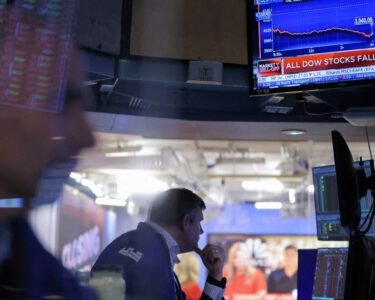
Image source: Getty Images
Many investors have created a second income from the dividends that companies pay to their shareholders.
For that strategy, I like the look of Hargreaves Lansdown (LSE:HL.) in the FTSE 250 index.
The business provides financial and asset management services. It offers investment products, financial planning and advice to private investors. Lots of people use the company to host their Stocks and Shares ISAs, Self-Invested Personal Pensions (SIPPs) and shares & funds dealing accounts.
A chunky yield
With the stock price in the ballpark of 816p, the forward-looking dividend yield is just below 6% for the trading year to June 2025. That compares to the yield of the FTSE 250 index running close to 4.6%.
That’s a chunky level of shareholder payment. But one of the things I like most about this business is its consistent record of rising annual dividends per share over the past few years. This table tells the story:
| Year to June | 2018 | 2019 | 2020 | 2021 | 2022 | 2023 | 2024(e) | 2025(e) |
| Dividends per share (p) | 32.2 | 33.7 | 37.5 | 38.5 | 39.7 | 41.5 | 45.7 | 48.3 |
| Dividend growth | 11% | 4.66% | 11.3% | 2.67% | 3.12% | 4.53% | 10% | 5.71% |
There isn’t a down-year in that record of growth, not even through the pandemic. On top of that, City analysts are predicting decent increases for the shareholder payment in the current trading year and for 2025.
However, further advances beyond those shown in the table aren’t guaranteed. Past performance of any business isn’t a reliable guide for the future.
One challenge is that the sector is competitive. So private investors can choose between many providers these days. There’s some risk in that situation when investing in Hargreaves Lansdown shares. If the company’s revenues begin to decline, we could see the share price and the dividends shrink in the years ahead.
A positive outlook
Nevertheless, chief executive Dan Olley said in October 2023 that the company had been seeing net client growth and positive net new business. That was despite a difficult macroeconomic backdrop and “its on-going impact on investor confidence and client behaviour”.
Back then, Olley said clients were investing more in cash than in risk-based investments. But the firm’s active savings offer was providing customers with “easy access” to a range of banking partners, money market funds and short-dated bonds.
It looks like the company’s diverse range of services has evergreen appeal for savers and investors. That could help the stability of dividend payments in the years ahead.
We’ll find out more about progress from the company with the interim results due tomorrow (22 February).
Meanwhile, with £2k to invest and allowing for costs, I could buy around 240 shares at the current share price.
Despite the risks, I’m tempted. After deeper research, I’d aim to make the stock part of a diversified portfolio including other company’s shares as well. But before committing, I’m keen to see what the firm has to say about current trading in the upcoming report.




